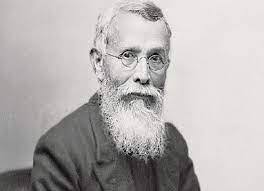Satyendra Prasanna Sinha, also known as Lord Sinha, holds a significant place in Indian history for being the first Indian to be appointed to the Viceroy’s Executive Council in 1909. Here’s more about his life and contributions:
Born on March 24, 1863, in Raipur, Bengal (now in West Bengal).
Educated at Presidency College, Kolkata, and later at the University of Cambridge, where he studied law and was called to the Bar at Lincoln’s Inn.
Political and Legal Career
Sinha was a prominent barrister and one of the earliest Indians to achieve success in the British legal system.
He served as the Advocate-General of Bengal, becoming the first Indian to hold this position.
In 1909, under the Indian Councils Act (Morley-Minto Reforms), Sinha was appointed as a member of the Viceroy’s Executive Council, making him the first Indian to hold this office.
He was responsible for overseeing legal affairs and played a vital role in shaping legislative reforms during the period.
In 1920, he was appointed the Governor of Bihar and Orissa, becoming the first Indian to hold the position of a provincial governor under British rule.
Represented India at the Paris Peace Conference (1919), playing a significant role in articulating Indian interests on the international stage.
Sinha was associated with the Indian National Congress in his early years and later with more moderate reformist politics.
Advocated for gradual constitutional reforms and worked within the system to secure rights for Indians.
In 1915, he was knighted and given the title Sir Satyendra Prasanna Sinha.
In 1919, he was elevated to the British peerage as Baron Sinha of Raipur, making him the first Indian to be given a hereditary peerage.
Known for his moderate and reformist stance, Sinha believed in working within the colonial framework to achieve progress for Indians.
Satyendra Prasanna Sinha passed away on March 4, 1928, leaving behind a legacy of pioneering contributions to India’s legal and administrative systems.







